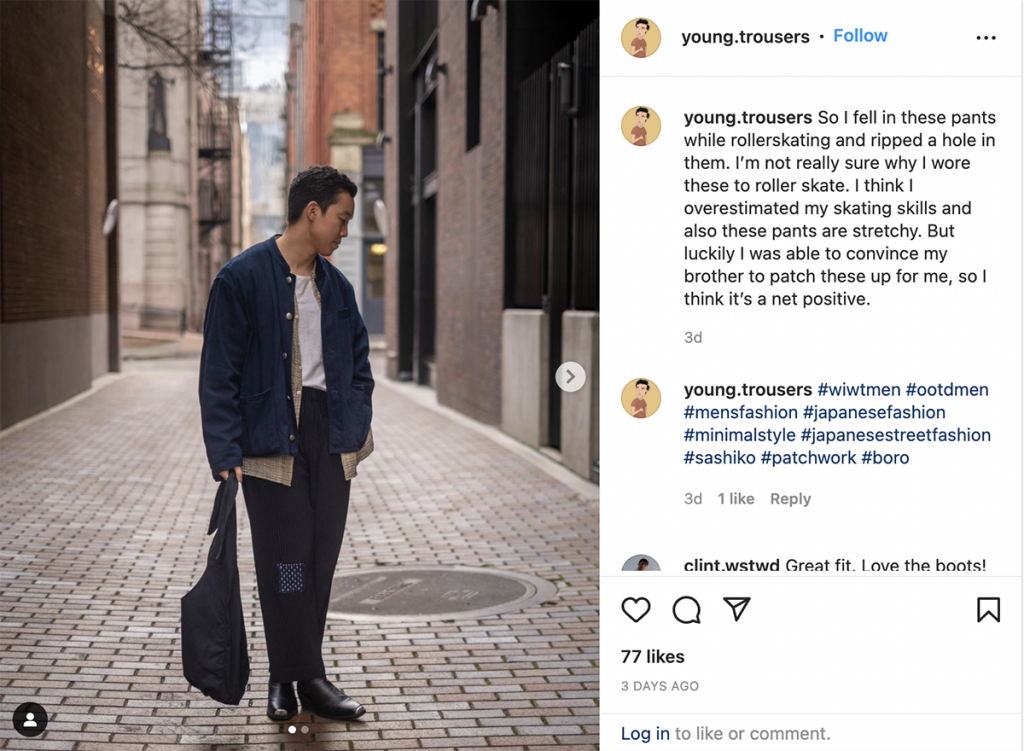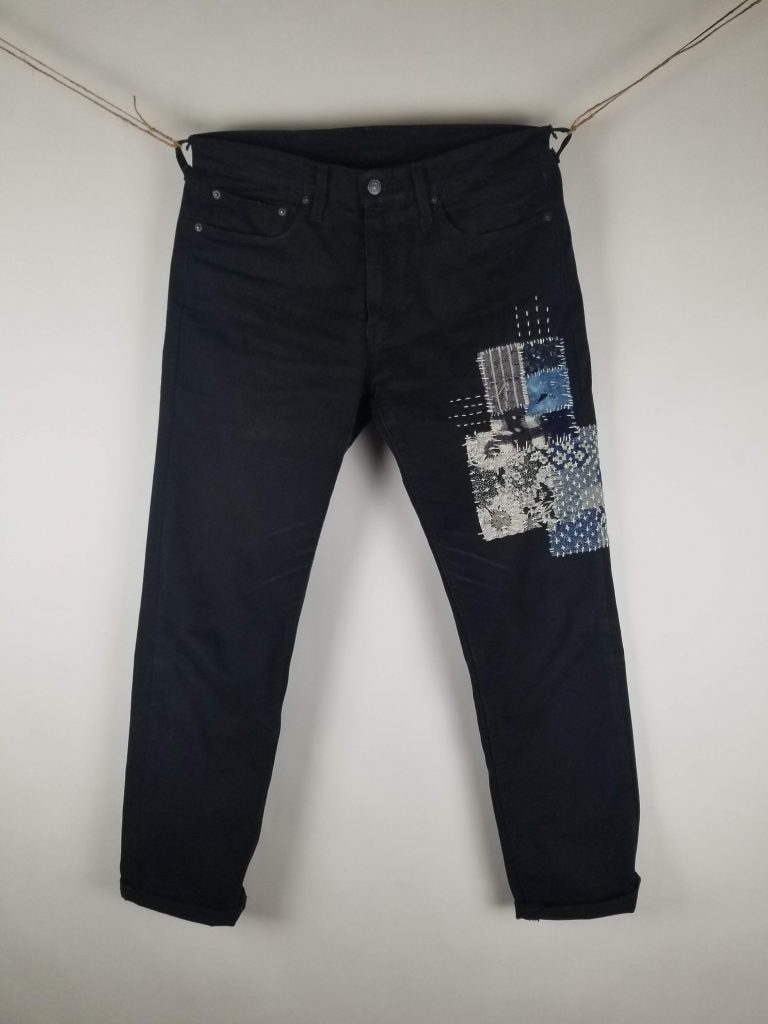Maybe your crotch finally blew out after years of getting up and down. Maybe you snagged the front panel of your jeans against something sharp. Or maybe what began as a tiny slit along the seam has since roared into a gaping hole. What next? Do you give these hole-y slacks their last rites and send them to the Big Closet in the Sky? Does this wounded sartorial soldier become relegated to house-pants duty? Or is there a way for them to be saved?
On the latter count, 22-year-old Michael Ngo, who’s recently gotten into embroidery, says patches are all the rage right now. In particular, he cites FDMTL, a Japanese brand born from the concept of clothes that create sentimental value — a la denim shirts, jackets and jeans that look like they’ve been pieced together with patches from all sorts of materials. “As I started to get into fashion, I saw brands like FDMTL that patched their clothing and fell in love with that style,” Ngo tells me, adding that he uses FDMTL’s aesthetic as a guide to patch the holes in his own clothes. “One of the main reasons for patching is to repair clothing that’s been damaged or heavily worn. I also found it to be an art form. Sometimes I patch clothing purely for style.”
Most recently, Ngo patched his brother’s pants after a rollerskating spill that resulted in a hole on the knee:

The basic calculus for his approach is that whatever patch he decides to sew on needs to elevate the pants aesthetically. “That usually ends up being the biggest obstacle,” he explains. “There’s an unlimited number of shapes, patterns and fabrics, which always ends in decision fatigue. But once the location of the patch and fabric of the patch is decided on, sewing it on is the easy part.”
Ngo learned to sew the same way anyone learns anything these days — on YouTube. He began by watching videos on sashiko stitching — a form of Japanese folk embroidery using a variation of a running stitch (up and down through fabric) to create a patterned background. Traditionally, sashiko is made in geometric patterns with white cotton thread on indigo blue fabric.
Ngo prefers this method not just because of the way it looks but because it’s simple. “In regards to how I sew the patches on, I use a basic running stitch and follow a pattern until it’s fully sewed on,” he says. “Initially, I referenced the shapes, sizes and fabrics of patches companies like FDMTL would use and draw inspiration from them. Now, though, I draw shapes out on a piece of paper and find what looks best on the specific garment.”
In addition to the shape, his other main considerations are what kind of pattern and color works best with the garment he’s patching — i.e., does he want his patch to blend in with his pants, or does he want it to stand out? “This is usually down by feel — I throw different fabrics on the pants and see how they look,” he says. “If I’m patching an area that gets a lot of friction — for example, a crotch blowout — I opt for a heavier fabric for better reinforcement. The less friction the repaired area gets, the more freedom you have for the type of patch you use.”

Ngo is also of the opinion that any hole — no matter its size or location — can be patched, as long as you have enough fabric and patience. “Personally, I don’t believe there are any hard-and-fast rules to patching,” he says. “If you have spare fabric and somewhere you want to put it, you’re halfway there.” He even advocates for a patch atop a patch if the first doesn’t take.
Your pants might not be good as new, but he swears that they’ll look as unique as ever.

